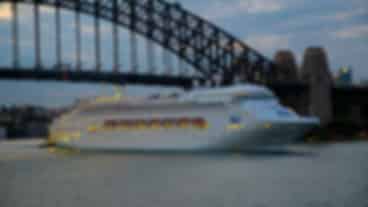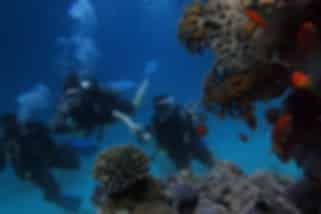Top 10 UNESCO World Heritage Sites in the World
Author
Jonhsia Aruldhas
Updated Date
May 28, 2025
Read
7 minutes

If you are someone who loves to explore the cultural and historical gems of the world, you are at the right place. UNESCO World Heritage Sites are the protected spots that add value to the human race with the reflections of culture, nature, or history. These outstanding places are not just pretty sights but treasures that offer meaningful experiences to visitors. You should add these top 10 UNESCO World Heritage Sites to your bucket list if you are an adventure seeker or a history buff.
Must Visit Top 10 UNESCO World Heritage Sites in 2025
- The Great Wall of China, China
- Machu Picchu, Peru
- The Pyramids of Giza, Egypt
- The Colosseum, Italy
- The Great Barrier Reef, Australia
- Stonehenge, England
- Taj Mahal, India
- Acropolis of Athens, Greece
- Galápagos Islands, Ecuador
- Yellowstone National Park, United States of America
The Great Wall of China

The Great Wall of China is more than 20,000 kilometres long and was initially built as a military defence of the country. It has a historical significance unlike any other. The construction extended from the 3rd century BC to the 17th century AD, making it an architectural marvel. It is a true masterpiece that attracts millions of tourists every year.
Country: China
Best time: April to June and September to November
Machu Picchu

The historic sanctuary of Machu Picchu stands amidst the beautiful setting of a tropical mountain forest. Each cut, carving, design, and intricacy looks perfect and it blends so well with nature. It is the legacy of the Inca civilisation that makes it a historically and culturally significant spot to be treasured.
Country: Peru
Best time: April to October
The Pyramids of Giza

The Pyramids of Giza refer to the three large pyramids, which are the Great Pyramid of Khufu, the Pyramid of Khafre, and the Pyramid of Menkaure The mysterious pyramids are built on a rocky plateau on the west bank of the Nile in northern Egypt. The red pyramid was the first successful pyramid structure that served as an inspiration to the other pyramids. It is one of the most iconic structures that is loved by historians around the world.
Country: Egypt
Best time: October to April
The Colosseum

The Flavian Amphitheatre was used to hold hunts and gladiatorial combat for entertainment purposes. The entire monument is built from stone and concrete with only manpower, and it’s oval-shaped. The Colosseum is one of the most visited monuments of Rome, as it never disappoints any type of traveller.
Country: Italy
Best time: April to June and September to October
Italy Tour Package Starting @ ₹66,980
The Great Barrier Reef

The Great Barrier Reef is one of a kind because of its collection of 400 types of coral, 1,500 species of fish, and 4,000 types of mollusc. It has a complex, extensive coral reef ecosystem that is one of the biggest conservative marine ecosystems in the Pacific Ocean. You can do water activities, including snorkelling and scuba diving, in the Great Barrier Reef.
Country: Australia
Best time: June to October
Stonehenge

The creativity and artistic nature of Stonehenge entice millions of people to visit it. It stands as a testament to the lives of people who lived 4,000 years ago. The mysteries of the landscapes of Stonehenge call to be explored. The place itself is interesting, as there is a theory that it might have been a famous healing village.
Country: United Kingdom
Best time: May to September
Taj Mahal

The Taj Mahal is an architectural masterpiece that stands as a symbol of love. It is the most beautifully preserved tomb in the world, and it has a special significance, as it was built by Mughal emperor Shah Jahan in memory of his beloved wife, Mumtaz Mahal. The ivory-white marble building is a stunning monument that is almost always crowded with tourists.
Country: India
Best time: October to March
Acropolis of Athens

The Acropolis of Athens is an artistically carved pile of rocks that displays Greek antiquity. It was sculpted by Pheidias, who transformed the hill into art with his imagination. It features the Parthenon, which is a temple with the deity of wisdom. It has stood the test of time for about twenty-five centuries, in spite of the wars, earthquakes, and explosions.
Country: Greece
Best time: April to June and September to October
Galápagos Islands

These islands are in the Pacific Ocean and are described as a ‘living museum and showcase of evolution.’ The isolated islands have distinctive marine life, such as land iguanas and giant tortoises. The Galapagos Marine Reserve is notable for its wildlife, ranging from sharks to penguins. It is the perfect spot for eco-tourists, as they also offer activities such as boat tours and hiking trails.
Country: Ecuador
Best time: December to May
Yellowstone National Park

Yellowstone National Park is a breathtaking spot that is packed with geysers, hot springs, and other thermal features. The beloved national park of America is a UNESCO World Heritage Site that offers so many hiking and outdoor activities. It is a popular spot for spotting wildlife, including bison, elk, wolves, and bears.
Country: United States
Best time: June to September
There you go. The top 10 UNESCO World Heritage Sites every traveller ought to have on their bucket list are right before your eyes. Be it hiking the immortal Great Wall of China, wandering through the ancient ruins of Machu Picchu or snorkelling the world’s spectacular depths at the Great Barrier Reef, all these sites make for experiences to remember forever. So, what are you waiting for? Stash your bags, get on that ticket, and start crossing these mind-blowing places from your list. The world has so much to offer, and now it is your turn to explore it! Ready to make some unforgettable memories? Don’t forget to save this list for your future travels.
Recommended articles for you
Discover Packages


Need help in planning?
Talk to our Travel Experts






























